This article was co-authored by Timothy Sherman, RN. Timothy Sherman is a Registered Nurse (RN) based in Austin, Texas and affiliated with St. David's HealthCare. With over seven years of nursing experience, Timothy specializes in working with adults in a general medical/surgical setting, chemotherapy, and with biotherapy administration. He has also instructed Essentials of Medical Terminology and Anatomy and Physiology for Medical Assistants at Austin Community College. He received his BS in Nursing from Wichita State University in 2012.
There are 12 references cited in this article, which can be found at the bottom of the page.
This article has been viewed 76,607 times.
Swollen veins (varicose veins) can be painful and unsightly. Veins can swell for quite a few reasons, though they most commonly occur when there is something blocking them or hindering proper blood flow. Common conditions that can cause swollen veins are pregnancy, heredity, weight, age and thrombophlebitis (an inflamed vein with associated blood clot). You will likely notice them bulging near the surface of your skin, and sometimes causing you pain. In most cases you can reduce the swelling at home. Make sure you take action against swollen veins quickly — if you leave them alone they will likely get worse.
Steps
Finding Relief Quickly
-
1Put on compression stockings. One way to get relief from swollen veins is to put on compression stockings. These are tight-fitting stockings that put pressure on your legs to help push blood through your veins, reducing vessel diameter and improving blood flow. There are two types of compression stockings you can get without a doctor’s prescription, or you can get the strongest kind by talking to your doctor.[1]
- Follow manufacturer recommendations regarding when and how long to wear compression stockings. Make sure to check your skin condition underneath the stockings multiple times each day. Advanced age, diabetes, nerve damage, and other conditions can place an individual at greater risk for skin damage associated with prolonged pressure and skin infections. The stockings should be the appropriate size for the person using them and not too tight.
- Support pantyhose. These are merely tight stockings, which offer the least amount of pressure. They will provide pressure to your entire leg, not a particular part, but can be helpful if the swelling isn’t serious.
- Over-the-counter (OTC) gradient compression hose. These are sold in medical supply and drugstores, and will provide more targeted pressure. Look for products labelled “gradient” or “graduated.”
- By talking to a doctor, you can get prescription stockings. These are the stockings that give the most pressure to your legs. They can be targeted to different parts of your legs to make sure you get pressure where you need it most. Make sure you wear them as often as directed. If you do get a prescription, don’t stop wearing them without consulting your doctor.
-
2Elevate your legs. To get blood flowing out of your legs and back towards your heart, lie down and raise them above your heart. Elevate your legs at least 15 minutes, three to four times a day.[2] :
- Some good ways to elevate your legs include putting pillows under your legs while you lie in bed, lying on a couch with your legs elevated on pillows on a chair in front of you, or leaning back in a reclining chair that will elevate your legs above your heart.
- Do not elevate your legs more than six times a day, as it puts a good deal of pressure on your vein’s walls.
Advertisement -
3Take NSAIDs to reduce swelling. Non-steroidal anti-inflammatory drugs (NSAIDs) can help reduce swelling in your veins. NSAIDs provide relief by blocking the release of prostaglandins, which cause swelling and pain. It is important to take NSAIDs on a full stomach to prevent tummy aches and hyperacidity.[3]
- Do not start taking NSAIDs without consulting your doctor first. He can recommend dosage amounts to provide the best relief while not overdoing it. Use of NSAIDs for more than two weeks may cause the side effect of stomach or intestine ulcers.
- Common NSAIDs include aspirin, Ibuprofen (sold commercially as Advil or Nuprin), Naproxen (Aleve), and Ketoprofen (Orudis KT).
-
4Consider other medications. If you are suffering from thrombophlebitis, you may need medication that thins the blood or dissolves clots. You will need a prescription for these drugs, so talk to your doctor about the best options for you.[4]
- Blood-thinning medications will prevent your blood from clotting, creating better flow in your veins. Common blood-thinners include heparin or fondaparinux (sold as Arixtra), warfarin (Coumadin) or rivaroxaban (Xarelto).
- Clot-dissolving medications deal with clots that already exist, and are usually used for more extensive and serious cases. These include alteplase (Activase), and will dissolve blood clots currently in your veins.
-
5Use natural remedies for reducing swelling. If you are uncomfortable, or unable, to take NSAIDs, consider some natural remedies to reduce the swelling. You should talk to your doctor about using these treatments as well, making sure that your dosage is right and that they don't interact with other medications you may be taking.
- Licorice root extracts can be taken internally or externally. Make sure the form you take it in is diluted properly. Avoid using if you have heart disease, hormone-sensitive cancers (breast, ovarian, uterine, or prostate), high blood pressure, diabetes, disease of the liver or kidney, low potassium, erectile dysfunction, or if you are pregnant or breastfeeding.
- Apply marigold herbs to the affected area before putting on compression, either a cloth or your stockings.
- Epsom salt baths can also reduce swelling. Add one to two cups of salt to bath water and let it dissolve before soaking in it. You don’t need to wash yourself with it, just sit and relax. Take at least one bath per week, or soak your feet in lukewarm water with Epsom salts daily.
Stretching to Promote Circulation
-
1Do leg stretches after sitting for a long time. Whether you are working at a desk, sitting in a car, riding in an airplane, or spending a lot of your day sitting down at home, make sure you stretch a few times a day. Sitting all day can cause your veins to become swollen because of decreased blood circulation. There are several good stretches you can do, even while sitting down.[5]
- Sit with your legs straight out in front of you under your desk with only your heels touching the ground.
- Curl your toes so that they are pointing towards you and hold this position for 30 seconds. You should feel a stretch in your calf muscles, however, do not stretch so much that you feel pain.
- Point your toes away from you and hold this position for 30 seconds. You will feel a stretch in the front leg but make sure that there is no feeling of pain.
-
2Stretch your chest a couple times a day. Your legs are not the only thing that need to be stretched. This chest stretch helps your chest muscles and strengthens your back muscles to combat poor posture. Having good posture helps to keep your blood flowing smoothly throughout your body.
- Sit up tall in your chair. Imagine that there are strings from the ceiling that are pulling your chest upward. Interlock your fingers, and turn your palms toward the ceiling. Lift up your chin, tilt your head back, and gaze at the ceiling. Take a deep breath in this position, exhale, and release.
-
3Take advantage of any breaks that come during the day. Whether you are sitting at your desk for work, or in the car for a long ride, look for chances to get up from sitting. If one isn’t coming up, make some time for a break to happen.
- While in the car, use trips to the gas station, bathroom breaks, even sightseeing to get up and stretch for a bit. These can work even if you aren’t actually filling up the tank or using the bathroom. Just a little break from sitting can be helpful for the veins in your legs.
- When you are at work, look for excuses to get up during the day. Rather than sending an email, walk to the person’s desk or office to have a conversation in person. When you go to lunch, walk somewhere for food instead of just sitting at your desk.
- This can be tough when flying, but for long flights consider getting up and walking to the back of the plane and back to your seat. Maybe get up and go to the bathroom once during the flight as well.
Changing Your Lifestyle
-
1Know the symptoms of swollen veins. If you are suffering from these symptoms, this can be a sign you should start treatment and maybe contact a doctor. The sooner you take action, the quicker you can get relief. Symptoms of swollen veins only occur in the area where the swollen vein exists.[6]
- Common symptoms include fullness, heaviness, aching, and pain in the legs; mild swelling of feet or ankles; and itching. You will probably also see visible swollen veins, particularly in your legs.
- More severe symptoms include leg swelling, leg or calf pain after sitting or standing for long periods; color changes to the skin of the legs or ankles; dry, irritated, and scaly skin that cracks easily; skin sores that don’t heal easily; and thickening and hardening of the skin in your legs and ankles.
-
2Avoid standing for long periods. This causes strain on your legs, which can lead to pain and poor blood flow. Find ways to take a break and sit down for a while, breaking up the time when you are standing.[7]
- When you sit, make sure you avoid crossing your legs. Keep them raised when possible, which will let the blood flow away from them. If possible, probably while lying down, raise your legs above your heart level to further reduce blood flow.
-
3Avoid sitting with your legs crossed at the level of your knees. Sitting in this position will lead to a restriction of your blood flow. Your restricted blood flow can cause the lower veins to dilate (because the venous drainage to the heart is restricted.[8]
-
4Exercise. Look for workouts that helps to stimulate your legs muscles. The contraction of skeletal muscle in the legs will help blood flow back into your heart and through the rest of your body, putting less pressure on the veins in your legs.[9] Even just flexing your foot up and down when sedentary can help propel blood through the veins of your legs.[10]
- Exercises that are recommended for people dealing with this condition include walking, jogging, and swimming. Swimming, in particular, is good because it keeps your body horizontal, which means that your blood is less likely to accumulate in your legs and cause your veins to become swollen.
-
5Lose some weight. If you are overweight, you should consider losing some weight to help treat your swollen veins. When you are overweight, more pressure is put on your lower body, including your legs and feet. This can cause more blood to go to that area, which can lead to swollen veins.[11]
- To best lose weight, find ways to control your diet. Limit portion sizes and get a good balance of foods. Look for lean proteins, low-fat dairy, whole grain cereals and fibers, healthy oils, and fresh fruits and vegetables. Avoid eating sweets, fried or processed meals, and foods high in trans or hydrogenated fats.[12]
- Talk to a doctor about your weight loss goals. She can tell you if they are realistic or manageable, and can provide additional guidance to help you reach them. Your doctor can also help you create a diet plan that takes into account any medications you are taking.
-
6Quit smoking. Aside from being generally unhealthy for you, smoking can also increase pressure in your veins. Some substances in cigarette smoke have very negative effects on your blood vessels, including the venous walls. It is better to stop smoking so that your veins will not become too dilated, leading to swelling.[13]
Getting Medical Treatment
-
1Talk to your doctor about sclerotherapy. This is a relatively painless procedure that injects a liquid chemical or saline solution into your veins to close them off, causing them to disappear. These are good for smaller varicose or spider veins. It may take several treatments, done every four to six weeks. After treatment, your legs will probably be wrapped with elastic bandaging to decrease swelling.[14]
- There is also a form of the treatment called microsclerotherapy, which targets spider veins. It uses a very fine needle to inject the liquid chemical into the veins.
-
2Consider laser therapy. This procedure is generally only used for small varicose veins. A laser will be applied to your skin near the swollen vein. It generates energy to heat the venous tissue, destroying all blood elements nearby. After that, the swollen vein will be obstructed, closed, and, after some time, reabsorbed by your body.[15]
-
3Learn more about ablation. Venous ablation uses intense heat to treat your veins, and can be performed either using radio-frequency or laser technology energy. Your doctor will puncture the vein, thread a catheter into the vein up to your groin, then send heat through it. This heat will close off and destroy the vein, and it will disappear over time.[16]
-
4Discuss getting an ambulatory phlebectomy. This is a surgical procedure in which the doctor will make small cuts in your skin to remove small veins. He will then use small hooks to pull the vein out of your leg. This procedure is good for removing spider veins and other small veins.[17]
- In normal cases, this is a same-day surgery. The doctor will only numb the area around the vein, so you will remain awake during the procedure. You may experience some slight bruising.
- Phlebectomy procedures may be done along with other procedures, including ablation. Your doctor will know if it is useful to do the treatments together.[18]
-
5Talk to your doctor about vein stripping. This is an invasive procedure for dealing with problem veins, and is usually done only for severe cases of varicose veins. The doctor will make small cuts in your skin, and tie off and remove the veins from your leg. You will be put under anesthesia during the procedure, and should recover fully in one to four weeks.[19]
- Even though you are removing veins, this surgery won’t affect your blood circulation. Additional veins deeper in your leg will deal with the blood, and the circulation in your leg should be fine.
Warnings
- In the case of clotting, those clots can travel to your lungs, causing a pulmonary embolism, which can be fatal. This is a rare occurrence, but one you should discuss with your doctor.[20] Signs of a pulmonary embolism include shortness of breath, clammy or blueish skin, irregular heartbeat, lightheadedness, restlessness, spitting up blood, or weak pulse.⧼thumbs_response⧽
- Varicose veins are a common form of swelling, and certain people are at greater risk for them. These include being older, female, born with defective valves, obese, or pregnant, and having a history of blood clots or a family history of varicose veins.[21]⧼thumbs_response⧽
References
- ↑ https://my.clevelandclinic.org/health/diseases/4722-varicose-veins
- ↑ https://www.uofmhealth.org/health-library/hw113606
- ↑ https://www.radiologyinfo.org/en/info/varicoseabl
- ↑ https://www.womenshealth.gov/a-z-topics/varicose-veins-and-spider-veins
- ↑ https://my.clevelandclinic.org/health/diseases/4722-varicose-veins
- ↑ https://www.nlm.nih.gov/medlineplus/ency/article/001109.htm
- ↑ https://www.nhlbi.nih.gov/health/health-topics/topics/vv/treatment
- ↑ https://www.womenshealth.gov/a-z-topics/varicose-veins-and-spider-veins
- ↑ https://www.nhlbi.nih.gov/health/health-topics/topics/vv/treatment
- ↑ http://www.ncbi.nlm.nih.gov/pubmed/3229117
- ↑ https://www.hopkinsmedicine.org/health/conditions-and-diseases/varicose-veins
- ↑ https://www.nlm.nih.gov/medlineplus/ency/patientinstructions/000330.htm
- ↑ http://www.hopkinsmedicine.org/healthlibrary/conditions/cardiovascular_diseases/varicose_veins_85,p08259/
- ↑ https://www.nhlbi.nih.gov/health/health-topics/topics/vv/treatment
- ↑ https://www.nlm.nih.gov/medlineplus/ency/article/007395.htm
- ↑ https://www.nlm.nih.gov/medlineplus/ency/article/007395.htm
- ↑ https://www.womenshealth.gov/a-z-topics/varicose-veins-and-spider-veins
- ↑ https://www.nlm.nih.gov/medlineplus/ency/article/007395.htm
- ↑ https://www.nhlbi.nih.gov/health/health-topics/topics/vv/treatment
- ↑ http://www.radiologyinfo.org/en/info.cfm?pg=varicoseabl
- ↑ https://www.nlm.nih.gov/medlineplus/ency/article/001109.htm
About This Article
Swollen veins can be painful and unsightly, so you’ll want to treat them quickly before they get worse. One way to get relief is to elevate your legs to get your blood flowing out of your legs and back towards your heart. Raise your legs for at least 15 minutes 3 to 4 times a day until you feel better. You can also take non-steroid anti-inflammatory drugs, like aspirin or ibuprofen, to help reduce swelling. For a more natural remedy, try soaking in a bath with 1 to 2 cups of Epsom salts once a week to help reduce swelling. Another way to reduce swollen veins is to wear a pair of compression stockings, which help push blood through the veins and improve blood flow. For more tips from our Medical co-author, including how to prevent swollen veins, keep reading!
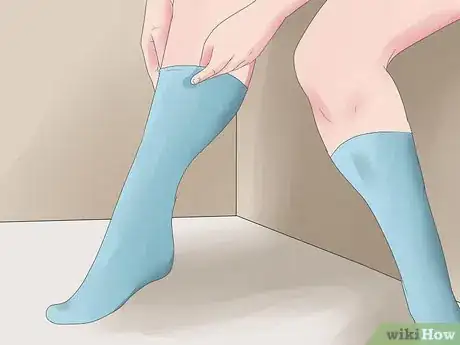
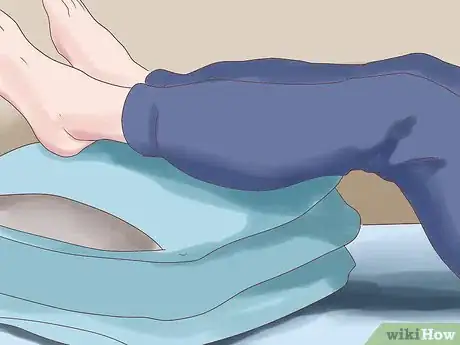
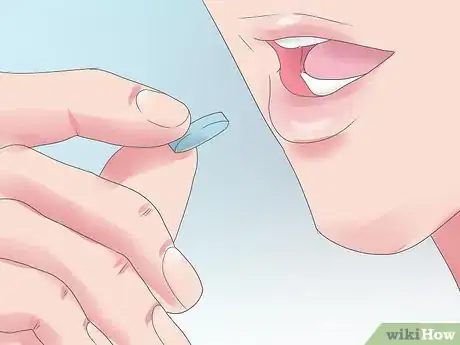
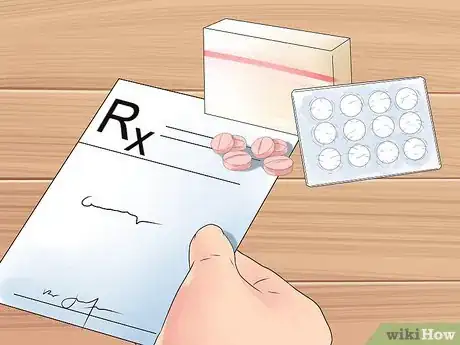
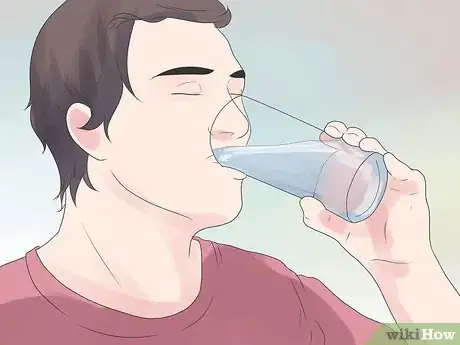
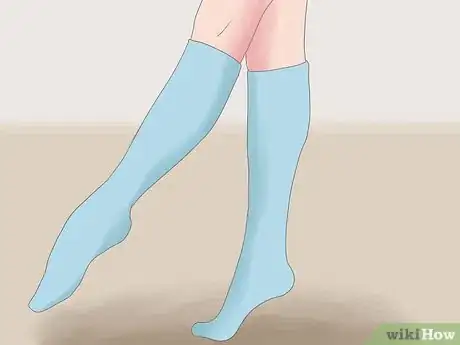
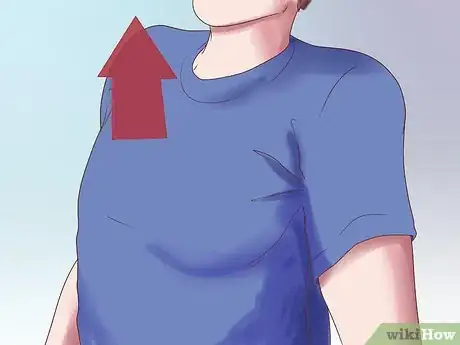
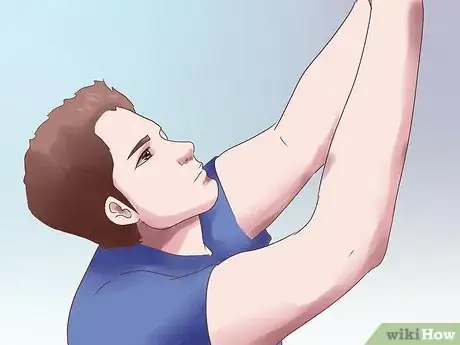
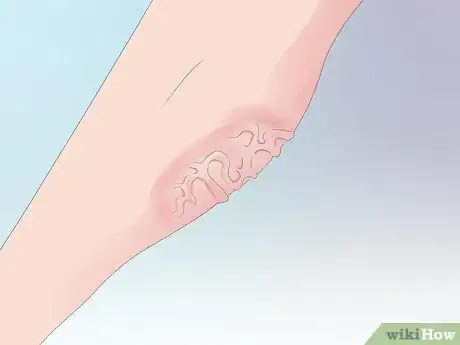
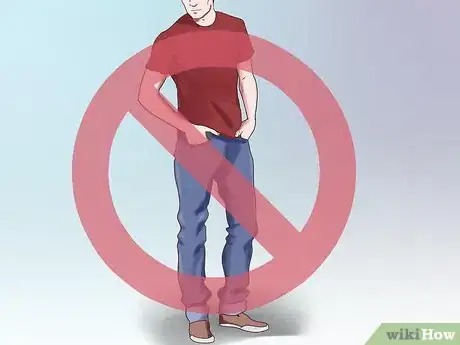
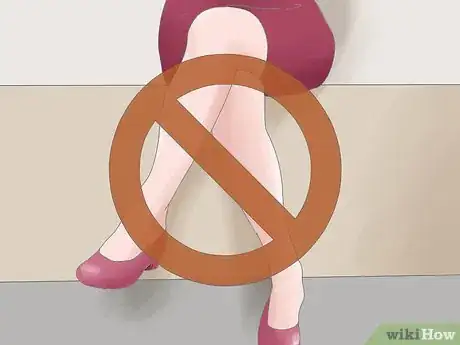
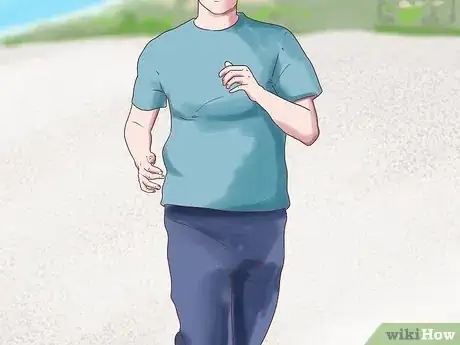
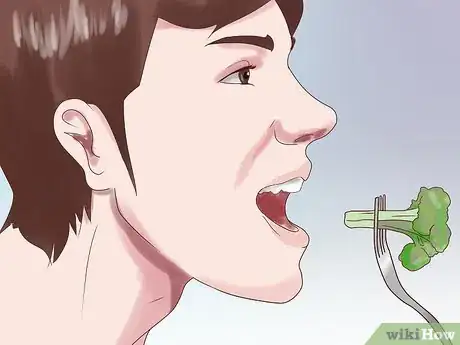
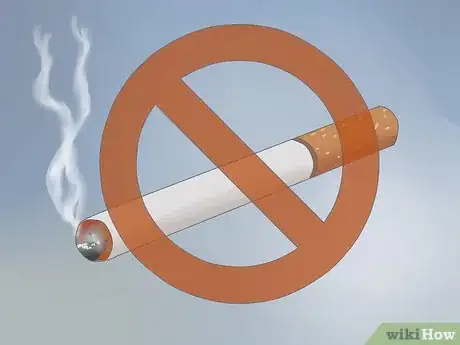
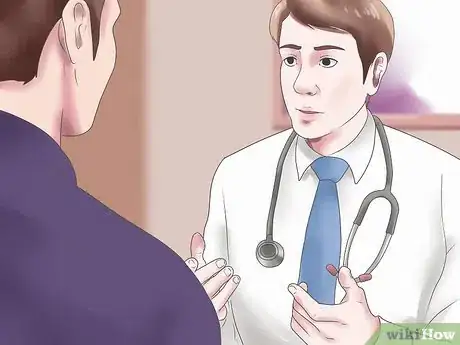
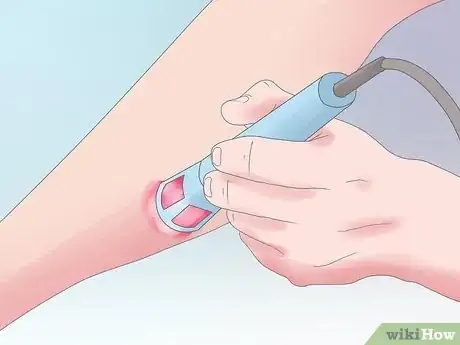
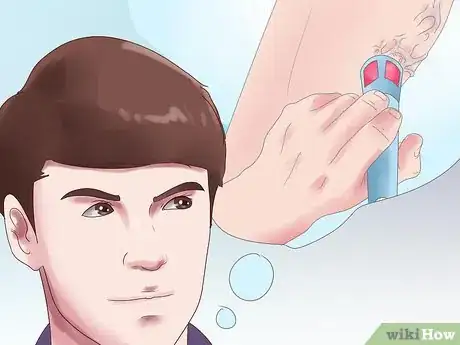
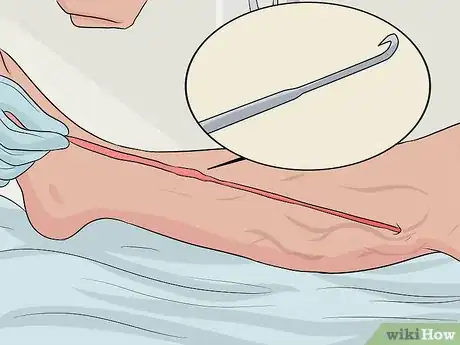
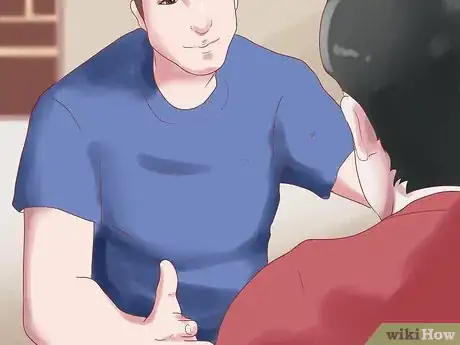
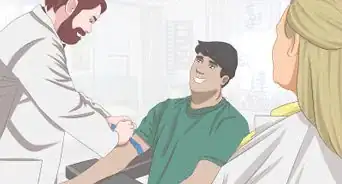
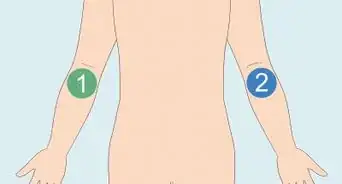
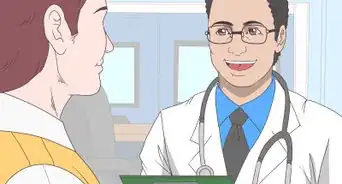
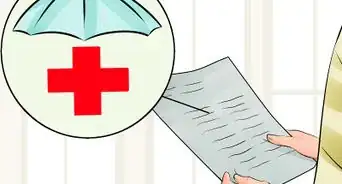
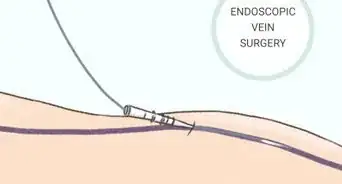
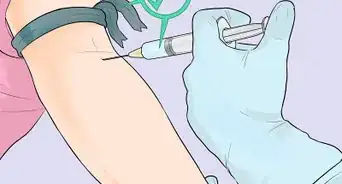

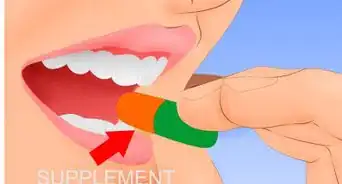
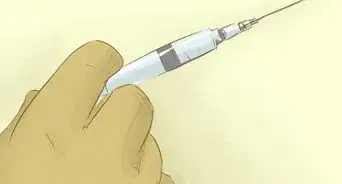
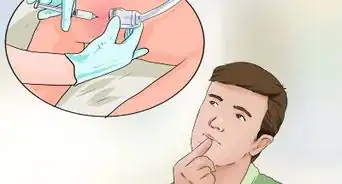









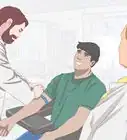
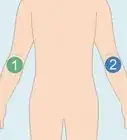
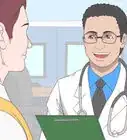
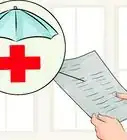



































Medical Disclaimer
The content of this article is not intended to be a substitute for professional medical advice, examination, diagnosis, or treatment. You should always contact your doctor or other qualified healthcare professional before starting, changing, or stopping any kind of health treatment.
Read More...